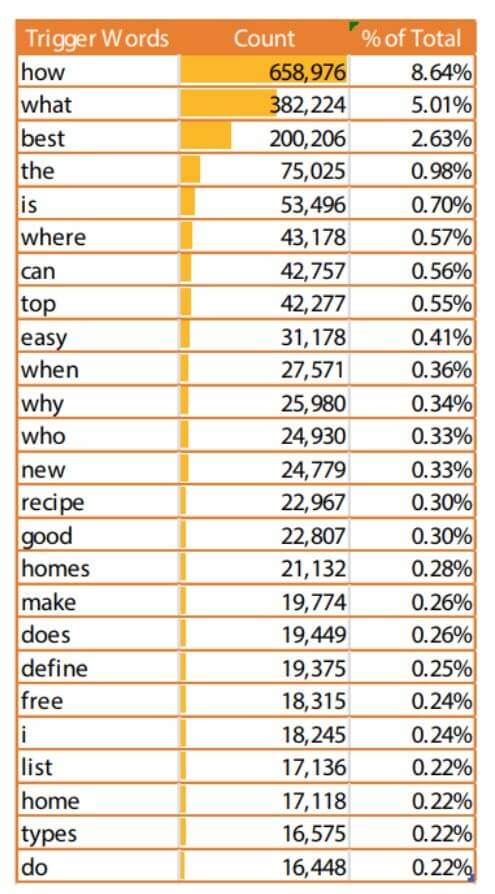
Optimizing for Voice Search and Digital Assistants
You consider Siri your personal assistant, you order takeout through Google Home and Alexa has become your new BFF. Welcome to the world of digital assistants, aren't they amazing!? But as we begin to navigate this world that makes our lives so much more convenient and hands free, marketers are wondering how we can capitalize on the opportunities that remain unearthed and how we optimize content for voice search. It might not be quite as hard as you think, but there are a few things you'll want to keep in mind.
First and foremost, you might be wondering, "Wait a minute, what is voice search?" Voice search is a method of submitting a search inquiry by voice to Google instead of typing it in by hand. Similar to Siri or Alexa, you might begin a search for Chinese food by saying "Ok Google, what are the closest Chinese restaurants near me?" Then Google produces search results similarly to how you're used to with desktop or mobile. The biggest difference here is just the fact that people searching by speech are likely searching how they talk, instead of searching by typing, but more on that below.
- According to Google, 55% of teens (13-18) use voice search every day and 56% of adults said using voice search made them feel “tech-savvy.”
- ComScore reports that 40% of adults use voice search at least once a day.
- It's not as new as you might think, here's a brief history of Google voice search.
Ok great, so how to we tackle and optimize content for voice search? Here are are a few pointers:
Optimize for local SEO.
According to Hitwise, nearly 60% of searches are now performed on a mobile device, and many of these are done through the voice search feature. Why? One might make the argument that people voice searching via mobile are on the go, multi-tasking, looking for hands-free answers quickly, sound like anyone you know? ComScore predicts that 50% of all searches will be voice searches by 2020. As marketers and advertisers, we must adapt to user behavior and also allow it to inform our marketing strategies, so this might be a bit of insight worth considering for future initiatives.
Jill Schmidt, President of Cream City Digital, advises businesses to "invest in local SEO to ensure they benefit from local searches and may want to consider integrating semantic keywords and schema markup related to nearby cities and landmarks."

Understand and optimize for user intent.
You've heard of latent semantic indexing (LSI) or semantic keywords so you know they're all about context. The entire goal of semantic keywords is to help provide additional context to search engines to help them better serve up content based on the goals and intent of the user. Generally speaking, people search for one of three reasons: information, purchase or location. According to Google analysts, voice searches on Google are 30 times more likely than text searches to be action-oriented, so a user is likely looking to do something when using voice search.
"While not much has been shared in terms of voice search intent for these digital assistants, as more data is revealed, businesses who pay attention to search intent and create appropriate content via related skills and apps will come out on top" says Jill Schmidt, President of Cream City Digital. In the end, it all goes back to the foundation of all good marketing: know your target audience.
Write how you talk.
This is a personal favorite. Writing how I talk has been my jam since high school and now it's finally paying off. It's simple people: communicate and have a conversation. Yes, to a degree, you're still writing for robots, but more than anything, you're writing for people. You're creating content to answer questions that other people may have. So write like you talk and use those long tail keywords. The more natural it feels, the more natural it will sound. A few great tools to use to discover more questions people are asking is Answer the Public and Quora. They both give valuable insight into what users are asking so you can craft more content tailored to those specific conversations.

Focus on long tail keywords.
Again, focus on how you talk. You talk in sentences (sometimes run-on sentences at that), so use your descriptors to your advantage. Long tail keywords are strings of more intricate and specific keyword phrases that people might use when they're pretty sure they know what they're looking for. It's just on the tip of their tongue, but they can't quite nail it down yet. To capture this user intent, help them out. Use keywords that describe your product features and benefits as detailed as possible and involve proper phrases or sentences. Getting really good at this will help to distinguish your content from the clutter of the internet in the long run.
Create Q & A style content. Use trigger words.
According to a recent study by Search Engine Watch, question phrases like "who," "what," "where," "why' and "how" have grown by 61% year over year. "Who" phrases have grown by 134% and "How" phrases have grown by 81% - leading the charge as the two most common searches. If you have the answer to a searcher's question, try incorporating the question phrases into your content to optimize your chance of being the suggested web page from the voice search applications.
Add question and answer content to a page to better optimize that landing page. For example, if you are a bakery who wants to market towards the wedding industry, you could focus on catching the attention of a voice searcher by answering a question about cake cutting. "How many slices of cake are typically cut from a three tier cake?" may be something someone planning a wedding wants to answer quickly. If you have the question and it's respective answer on your site, you could potentially gobble up some of that organic traffic. A "Frequently Asked Questions" page is a great backup as a catch-all to try and appeal to this SEO tactic. Listen to your audience. Answer their questions.

Don't forget your trigger words! Trigger words are your way of creating an emotional connection to web traffic through words and SEOClarity found that more than 20% of featured snippets are triggered by these top 25 words.
Understand how this affects your specific brand and industry.
Search Engine Watch discovered that there were different search inquiries for different verticals. They took a look at retail and financial services and discovered that "where" questions significantly over indexed for retail based business searches and "how" questions over indexed for financial services. Think about how this could apply to your brand and vertical and put on your thinking cap to find the most relevance for your company.

Be mobile friendly.
Most voice searches happen on mobile devices. So when content is served up to the user who inquired via voice search, make sure you're not missing an opportunity to convert a user because you're web content isn't mobile friendly. Break up paragraphs into short digestible chunks. Bullet points and lists are your friend. People like images. Make it scannable. Don't miss an opportunity because you got lazy with your content! You can test out your landing pages with Google's mobile-friendly test.
Build out microdata. Use schema markup.
Schema markup (schema) is an identified group of tags that you can incorporate into your HTML to advance your representation in SERPs. Think of schema markup as a search engine's translator assistant. It more or less expedites the way search engines understand the content on your website. Optimization is about making your website a search engine's best friend by walking their walk and talking their talk. By building out your microdata and using schema, your chances of wiggling into a search engine's friend circle will increase, along with the opportunity of your web pages appearing in Google's Answer Box.

Read the official user guides for your devices.
This might sound obvious or perhaps rudimentary, but you never know what you might actually find helpful in these little guides!
- User Guides: Apple (Siri), Amazon (Alexa), Google (Google Home), Windows (Cortana).
- Commands: Siri, Alexa, Google Home, Cortana,
- Reference: Google's newly-published Voice Search Quality Guidelines
In conclusion, unlike the optimization we're all most familiar with, stop writing for robots and robots alone. Become human in your writing and write like most people talk (while still being friendly to the robots), but really, it's a conversation. Communicate and you'll be just fine!

Kiley
Founder & CEO
Kiley Peters is the Founder and CEO of Brainchild Studios, a boutique audience research, content strategy, and website creation agency primarily serving brands targeting Millennial Moms or business owners. She is also the Founder of the Work From Home Playbook, a series of online courses guiding aspiring entrepreneurial moms through the steps of starting a virtual business. She also launched the Brainchild Fund, a nonprofit initiative to support women and girls in business and entrepreneurship Follow her on Instagram.
more posts by Kiley →











Leave a Reply